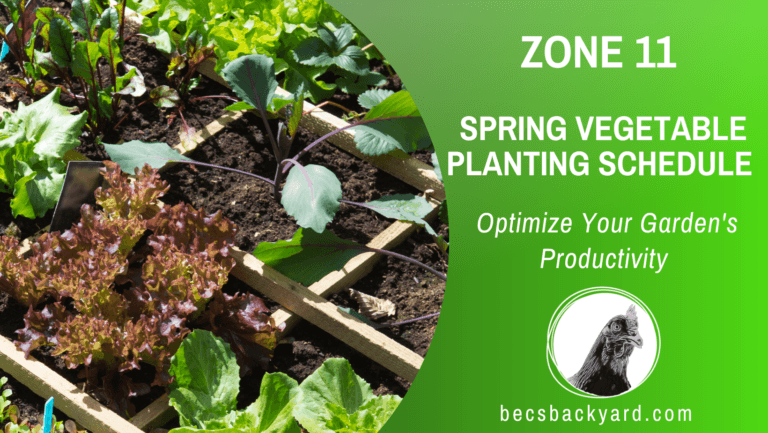How Often Do You Water Cucumbers? A Guide to Proper Cucumber Irrigation

Cucumbers are a popular vegetable that can be grown in a home garden or on a larger scale. Understanding the basics of cucumber plants is essential for growing healthy plants and producing a bountiful harvest. In this post we will answer the question of How Often Do You Water Cucumbers.

How Often Do You Water Cucumbers : Watering Basics
Watering your cucumber plants is a crucial aspect of their growth and overall health. Proper watering ensures that your plants receive the necessary nutrients and moisture to thrive. However, overwatering or underwatering can harm your plants. Here are some basic guidelines to follow when watering your cucumber plants:
Frequency
Cucumbers need a consistent supply of water to grow properly. In general, they should be watered once or twice a week. However, this can vary depending on the weather conditions and soil moisture levels. During hot, dry weather, you may need to water your plants more frequently.
Deep Watering
When watering your cucumber plants, it’s important to water deeply and evenly. This means that you should water at the base of the plant, rather than spraying water over the leaves. Deep watering helps the roots grow deeper into the soil, which makes them more resilient during dry periods.
Checking Soil Moisture
Before watering your plants, it’s important to check the soil moisture level. You can do this by sticking your finger into the soil up to the first joint. If the soil feels dry at this depth, it’s time to water your plants.
Signs of Overwatering
Overwatering can be just as harmful as underwatering. Signs of overwatering include yellowing leaves, wilting, and a foul odor. If you notice these signs, reduce the frequency of watering and make sure that the soil has proper drainage.
Signs of Underwatering
Underwatering can cause the leaves to wilt and turn yellow or brown. The soil may also feel dry to the touch. If you notice these signs, increase the frequency of watering and make sure that the soil is moist at the base of the plant.
By following these basic guidelines, you can ensure that your cucumber plants receive the proper amount of water and grow healthy and strong.
What Are Cucumber Plants?
Cucumber plants (Cucumis sativus) are popular warm-season vegetables known for their crisp, refreshing flavor and versatility in various culinary dishes. These plants belong to the gourd family, Cucurbitaceae, and are characterized by their sprawling vines, large leaves, and cylindrical or oblong fruits. If you’re considering growing cucumber plants, there are several essential factors to take into account to ensure a successful harvest.
Cucumber plants thrive in warm climates with ample sunlight. They require at least 6-8 hours of direct sunlight daily. Choose a well-draining, fertile soil with a slightly acidic to neutral pH for optimal growth.
The plants can be grown from seeds or seedlings. If starting from seeds, they can be sown directly into the garden after the danger of frost has passed. Alternatively, you can begin with seedlings to get a head start on the growing season.
Some cucumber varieties require pollination to produce fruit, while others are parthenocarpic and can set fruit without pollination. If your variety needs pollination, encourage bee activity by planting pollinator-friendly flowers nearby.
Cucumbers are typically ready for harvest when they reach a desirable size and color, depending on the variety. Regular harvesting promotes continuous fruit production. Use clean, sharp scissors or shears to cut the cucumbers from the vine to avoid damaging the plant.
Plant Size and Growth Habits
Cucumber plants are vines that can grow up to 6 feet long. They have a shallow root system, so it is important to water them deeply and frequently. The leaves of the plant are large and can provide shade to the fruit, which can help prevent sunscald.
Growing Cucumbers
Cucumbers are typically grown from seeds, which should be planted in warm soil after the last frost. They prefer well-draining soil and full sun. Cucumber plants can be trellised or allowed to sprawl on the ground.
Fruit Production
Cucumber plants produce both male and female flowers, which are necessary for fruit production. Bees and other pollinators are essential for pollinating the flowers and ensuring a good harvest. Cucumber plants can produce fruit for several weeks, but the fruit should be harvested when it is still small and tender for the best flavor.

Watering Cucumber Plants
Cucumber plants require consistent watering to produce healthy fruit. The frequency of watering will depend on the weather and soil conditions. As a general rule, cucumber plants should be watered deeply once or twice a week. It is important to check the soil moisture level before watering to avoid overwatering.
Environmental Factors
When it comes to watering cucumbers, environmental factors play a crucial role in determining the frequency and amount of water required. Here are some of the key factors to consider:
Weather
The weather is one of the most important factors to consider when watering cucumbers. In hot weather, cucumbers require more water than in cooler weather. High temperatures can cause the soil to dry out quickly, which can lead to stress and poor growth. On the other hand, too much rain can cause the soil to become waterlogged, which can lead to root rot and other problems.
Sunlight
Cucumbers require plenty of sunlight to grow and thrive. However, excessive sunlight can cause the soil to dry out quickly, which can lead to stress and poor growth. To prevent this, it is important to provide adequate shade for the plants during the hottest part of the day.
Climate
The climate plays a significant role in determining the watering requirements of cucumbers. In dry climates, cucumbers require more water than in wetter climates. Similarly, in areas with high humidity, cucumbers may require less water than in drier areas.
Hot Weather
In hot weather, it is important to water cucumbers frequently to prevent the soil from drying out. However, it is also important to avoid overwatering, as this can lead to root rot and other problems. To ensure that the soil remains moist, it is best to water the plants in the early morning or late evening, when the temperatures are cooler.
Rainfall
Rainfall can be both a blessing and a curse for cucumbers. While rain provides much-needed moisture for the plants, too much rain can cause the soil to become waterlogged, which can lead to root rot and other problems. To prevent this, it is important to ensure that the soil has adequate drainage and to avoid watering the plants during periods of heavy rainfall.
Overall, it is important to monitor the environmental factors that affect the watering requirements of cucumbers and to adjust your watering schedule accordingly. By providing the right amount of water at the right time, you can help your cucumbers grow and thrive.
Soil Considerations
When it comes to watering cucumbers, soil considerations are crucial to ensure optimal growth and yield. The type of soil and its texture can affect the amount of water cucumbers need and how often they should be watered.
The ideal soil for growing cucumbers is well-draining loam soil that is rich in organic matter. This type of soil allows for proper drainage and helps retain moisture, which is essential for healthy cucumber plants. If your soil is heavy clay, it may not drain well, and you may need to amend it with organic matter to improve drainage.
It’s important to note that overwatering cucumbers can lead to root rot and other issues, so it’s crucial to ensure that the soil is moist but not waterlogged. One way to check soil moisture is to stick your finger about an inch into the soil. If it feels dry, it’s time to water.
Mulching can also help retain moisture in the soil and regulate soil temperature. A layer of organic mulch, such as straw or leaves, can help prevent water from evaporating too quickly from the soil surface and reduce the need for frequent watering.
In sandy soils, which drain quickly and may not retain moisture as well, more frequent watering may be necessary. On the other hand, in heavy clay soils, less frequent watering may be needed as the soil retains moisture for longer periods.
Overall, understanding your soil type and texture is essential when it comes to watering cucumbers. By ensuring proper drainage and moisture retention, you can help your cucumber plants thrive and produce a bountiful harvest.
Disease and Pests
Cucumbers are susceptible to various diseases and pests that can affect their growth and yield. Knowing how to identify and manage these problems is crucial to maintaining a healthy cucumber plant.
Common Diseases
Fungal diseases are the most common problems that affect cucumber plants. Powdery mildew is a fungal disease that causes a white, powdery coating on the leaves, stems, and fruit. It can cause the leaves to yellow and eventually die. To prevent powdery mildew, avoid watering the leaves and use a fungicide if necessary.
Root rot is another common disease that affects cucumbers. It is caused by overwatering and poor drainage, which can lead to wilting and yellowing of the leaves. To prevent root rot, ensure proper drainage and avoid overwatering.
Common Pests
Cucumber beetles are a common pest that can damage cucumber plants. They feed on the leaves and stems and can transmit bacterial wilt, which can cause the plant to wilt and eventually die. To prevent cucumber beetles, use row covers or insecticides.
Another pest that can damage cucumber plants is the spider mite. They feed on the underside of the leaves and can cause yellowing and stunted growth. To prevent spider mites, keep the plants well-watered and use insecticidal soap or neem oil.
Cabbage loopers are another pest that can damage cucumber plants. They feed on the leaves and can cause defoliation and reduced yield. To prevent cabbage loopers, use row covers or release beneficial insects such as parasitic wasps.
Overall, proper management of diseases and pests is essential to maintaining a healthy cucumber plant. Regular inspection and preventative measures can help minimize the risk of damage and ensure a bountiful harvest.
Watering Techniques
Watering cucumbers is an essential task to ensure the plant’s growth and health. Here are some watering techniques that you can use to keep your cucumber plants hydrated:
Soaker Hose: A soaker hose is an excellent option for watering cucumbers as it delivers water directly to the plant’s roots. The long taproot and branching roots of the cucumber seedling help it access water. Make sure to use a hose nozzle with a soaker or mist attachment to avoid damaging the plant.
Evaporation: In hot and dry weather, evaporation can cause water to evaporate before it reaches the plant’s roots. To prevent this, it is recommended to water early in the morning or late in the evening when the temperature is cooler.
Drip Irrigation: Drip irrigation is a great option for watering cucumbers as it delivers water directly to the plant’s roots without wasting water. It is also an efficient way to water your plants, as it uses less water than sprinklers.
Sprinkler: Sprinklers are not the best option for watering cucumbers as they can cause water to evaporate before it reaches the plant’s roots. However, if you must use a sprinkler, make sure to water your plants early in the morning or late in the evening when the temperature is cooler.
Rain Gauge: A rain gauge can be used to determine how much supplemental water to give your cucumber plants. Cucumbers need watering once or twice per week, for a total of 1 to 2 inches of water. In hot, dry weather 2 inches is best. Signs that they’re getting too little or too much include curled leaves. If they’re brittle and hard, you may need to water more.In conclusion, watering cucumbers is an important task that requires the right technique to ensure the plant’s growth and health. By using the right watering technique, you can keep your cucumber plants hydrated and healthy throughout the growing season.
Gardening Practices
When growing cucumbers, it is important to follow proper gardening practices to ensure optimal productivity. Here are some key practices to consider:
Consistent Moisture
Cucumbers require consistent moisture to grow properly. The best way to ensure this is to water them deeply once or twice a week, depending on the weather conditions. It is important to check the soil moisture level before watering to avoid overwatering, which can cause problems such as bitter cucumbers.
Mulching
Mulching can help retain moisture in the soil and prevent weeds from growing. It is recommended to mulch around cucumber plants with organic materials such as straw or leaves.
Seedlings
When planting cucumber seedlings, it is important to space them about 8-12 inches apart to allow each seedling to develop its root system fully. It is also important to check for soil moisture regularly, using methods such as the finger dip test.
Season and Harvest
Cucumbers grow best in warm weather, with temperatures between 70-85 degrees Fahrenheit. They can be harvested when they are about 6-8 inches long for best flavor and texture.
Drought
In times of drought, it is important to water cucumbers more frequently to ensure consistent moisture. It is also recommended to mulch around the plants to help retain moisture in the soil.
Overwatering Cucumbers
Overwatering cucumbers can cause problems such as root rot and bitter cucumbers. It is important to check the soil moisture level before watering and to avoid watering too frequently.
By following these gardening practices, you can ensure optimal productivity when growing cucumbers.
Special Considerations
When it comes to watering cucumbers, there are a few special considerations to keep in mind. These considerations can affect the growth and yield of your cucumbers, so it’s important to pay attention to them.
Containers
If you’re growing cucumbers in containers, you’ll need to water them more often than if they were planted in the ground. This is because containers tend to dry out faster than soil in the ground. Make sure to check the soil moisture regularly and water when the top inch of soil feels dry.
Stunted Growth
Overwatering can lead to stunted growth in cucumbers. When the soil is too wet, the roots can’t get enough oxygen, which can slow down growth. To prevent this, make sure the soil has good drainage and don’t water too frequently.
Yield
Watering is crucial for the yield of cucumbers. If they don’t get enough water, the fruit can be small and bitter. On the other hand, overwatering can lead to a decrease in yield. To get the best yield, make sure to water consistently and deeply.
Pots
If you’re growing cucumbers in pots, make sure the pots are large enough for the plant to grow. Small pots can restrict root growth and lead to stunted growth and a decrease in yield. Make sure the pot has good drainage and water regularly.
Raised Beds
Cucumbers can be grown in raised beds, but they may need more water than if they were planted in the ground. This is because raised beds tend to dry out faster than soil in the ground. Make sure to check the soil moisture regularly and water when the top inch of soil feels dry.
Planted Inside
If you’re growing cucumbers inside, make sure they get enough light and water. Indoor plants can dry out faster than outdoor plants, so make sure to check the soil moisture regularly and water when the top inch of soil feels dry.
Frequently Asked Questions
How often should I water my cucumber plants?
The frequency of watering cucumber plants depends on several factors such as the type of cucumber, soil type, and climate. Generally, cucumber plants require consistent moisture, and they should be watered regularly to prevent the soil from drying out. A good rule of thumb is to water cucumber plants deeply once or twice a week, ensuring that the soil is moist but not waterlogged.
What are the signs of cucumber plants being underwatered?
Underwatered cucumber plants may exhibit several signs such as wilting, yellowing leaves, and dry soil. It’s essential to monitor the soil moisture levels regularly and water the plants when the soil feels dry to the touch. However, be careful not to overwater as this can also harm the plants.
Can overwatering harm cucumber plants?
Yes, overwatering cucumber plants can harm them as it can lead to root rot and fungal diseases. It’s essential to ensure that the soil is well-draining and not waterlogged. Water the plants deeply once or twice a week, depending on the weather conditions, and avoid watering them too frequently.
Is the watering frequency different for cucumber seeds?
Cucumber seeds require consistent moisture to germinate and grow properly. It’s essential to keep the soil moist but not waterlogged during the germination process. Once the seedlings have emerged, water them deeply once or twice a week, depending on the weather conditions.
Do cucumbers require more water than tomatoes or peppers?
Cucumbers require consistent moisture, but they don’t necessarily require more water than tomatoes or peppers. The watering frequency depends on several factors, such as the type of plant, soil type, and climate. It’s essential to monitor the soil moisture levels regularly and water the plants when the soil feels dry to the touch.
How do I know when my cucumber plants need watering?
You can tell when cucumber plants need watering by checking the soil moisture levels. Stick your finger into the soil up to your knuckle, and if the soil feels dry, it’s time to water the plants. Additionally, cucumber plants may exhibit signs of wilting or yellowing leaves when they need watering.
Conclusion
Cultivating your own cucumber plants can be a rewarding and fulfilling endeavor for any gardening enthusiast. From the vibrant green vines that reach for the sun to the satisfying crunch of homegrown cucumbers on your plate, the journey from seed to harvest is a testament to the wonders of nature and the care you invest in your garden. By understanding the unique needs of cucumber plants, providing them with the right conditions, and tending to them with dedication, you can experience the joy of watching these plants flourish and yield delicious fruits. So, roll up your sleeves, gather your gardening tools, and embark on a journey that promises not only a tasty harvest but also a deeper connection to the natural world around you. Happy cucumber gardening!






